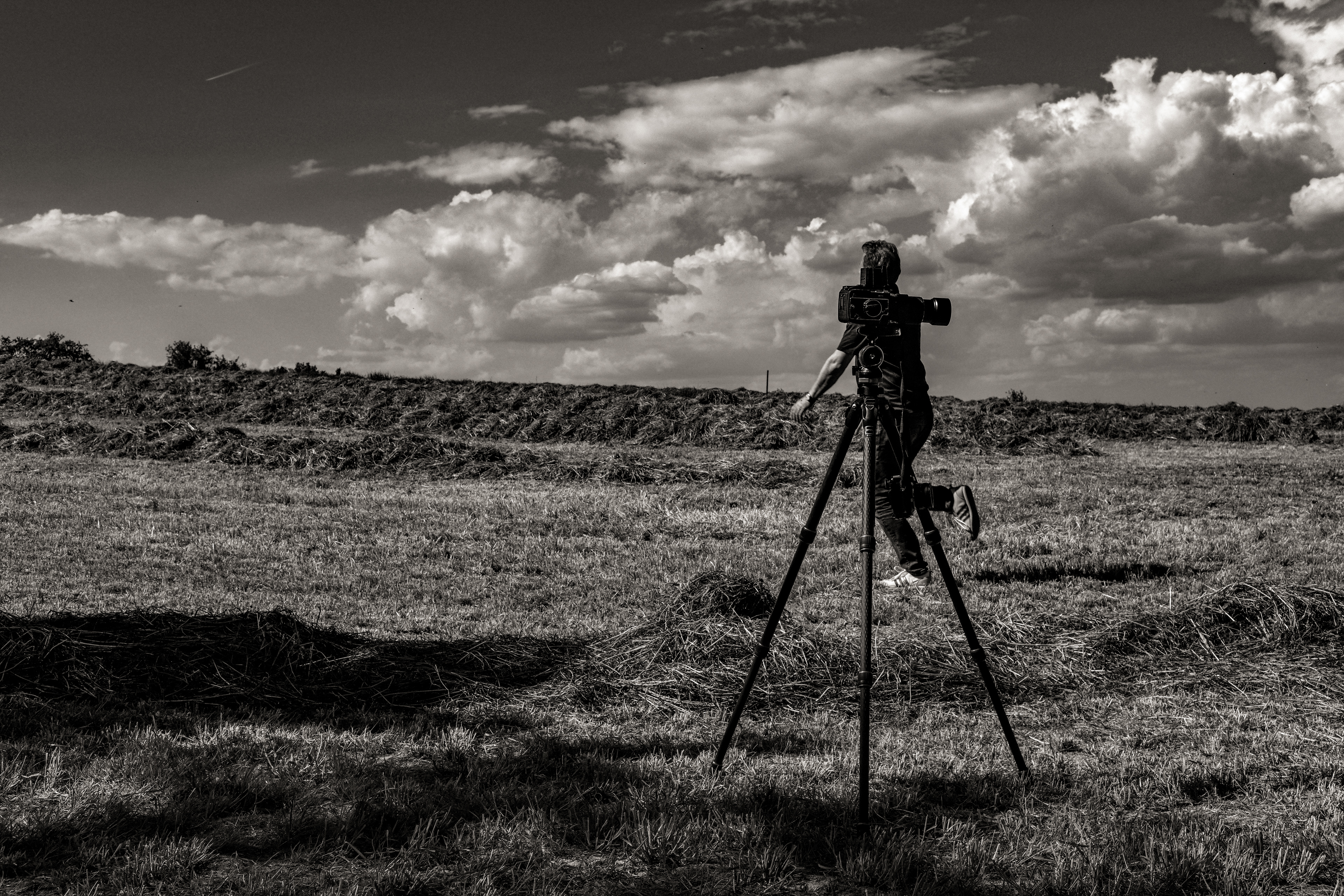
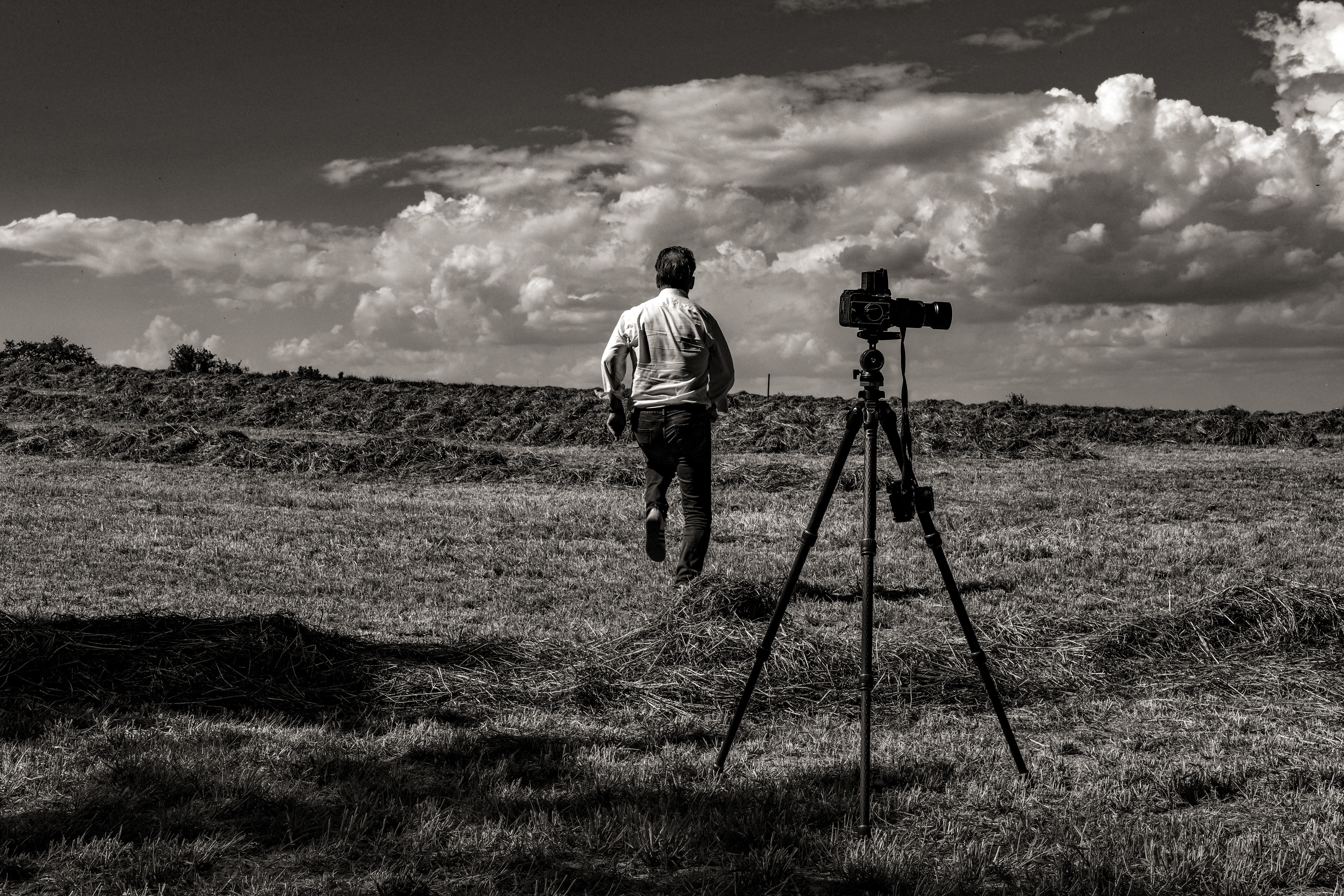
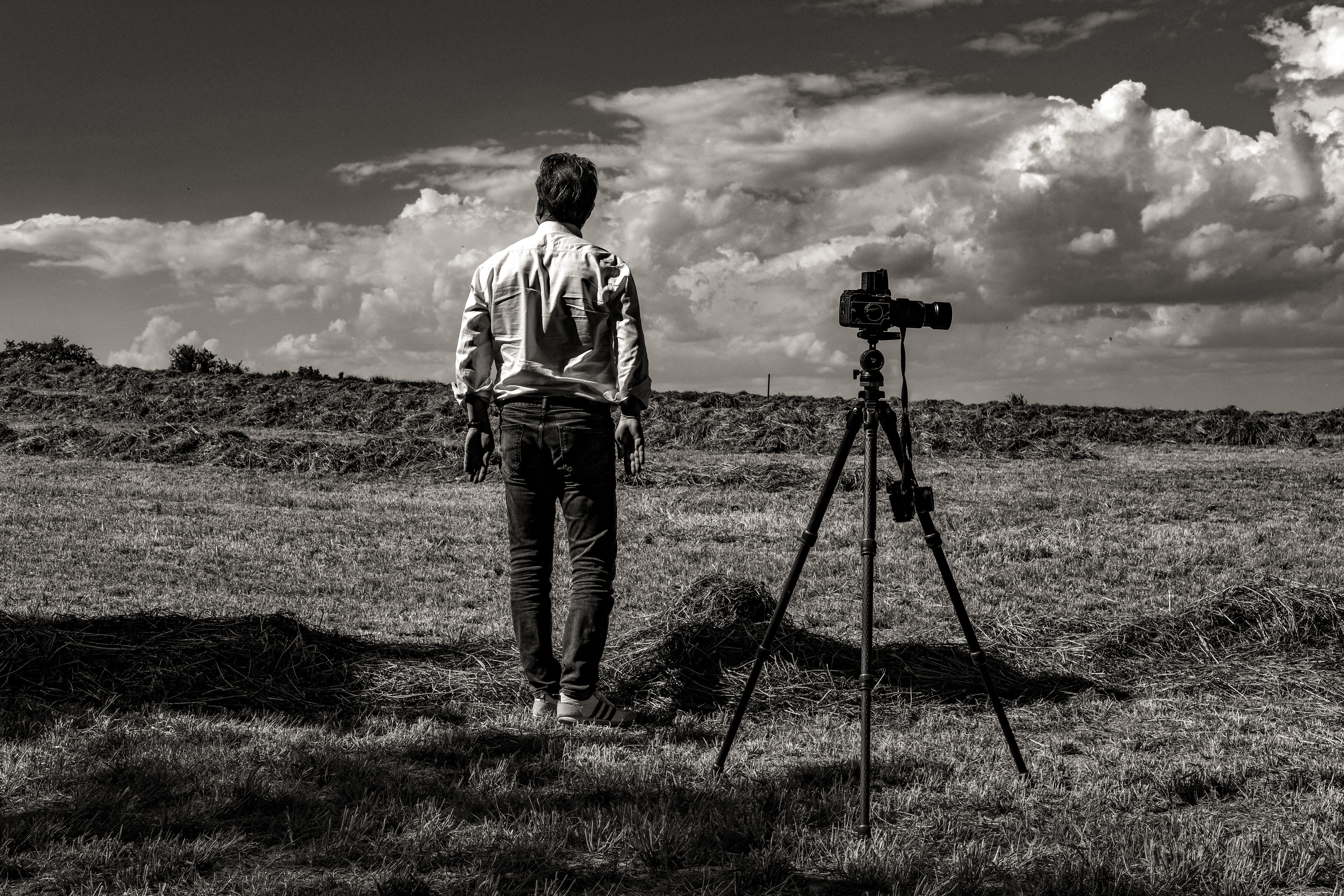
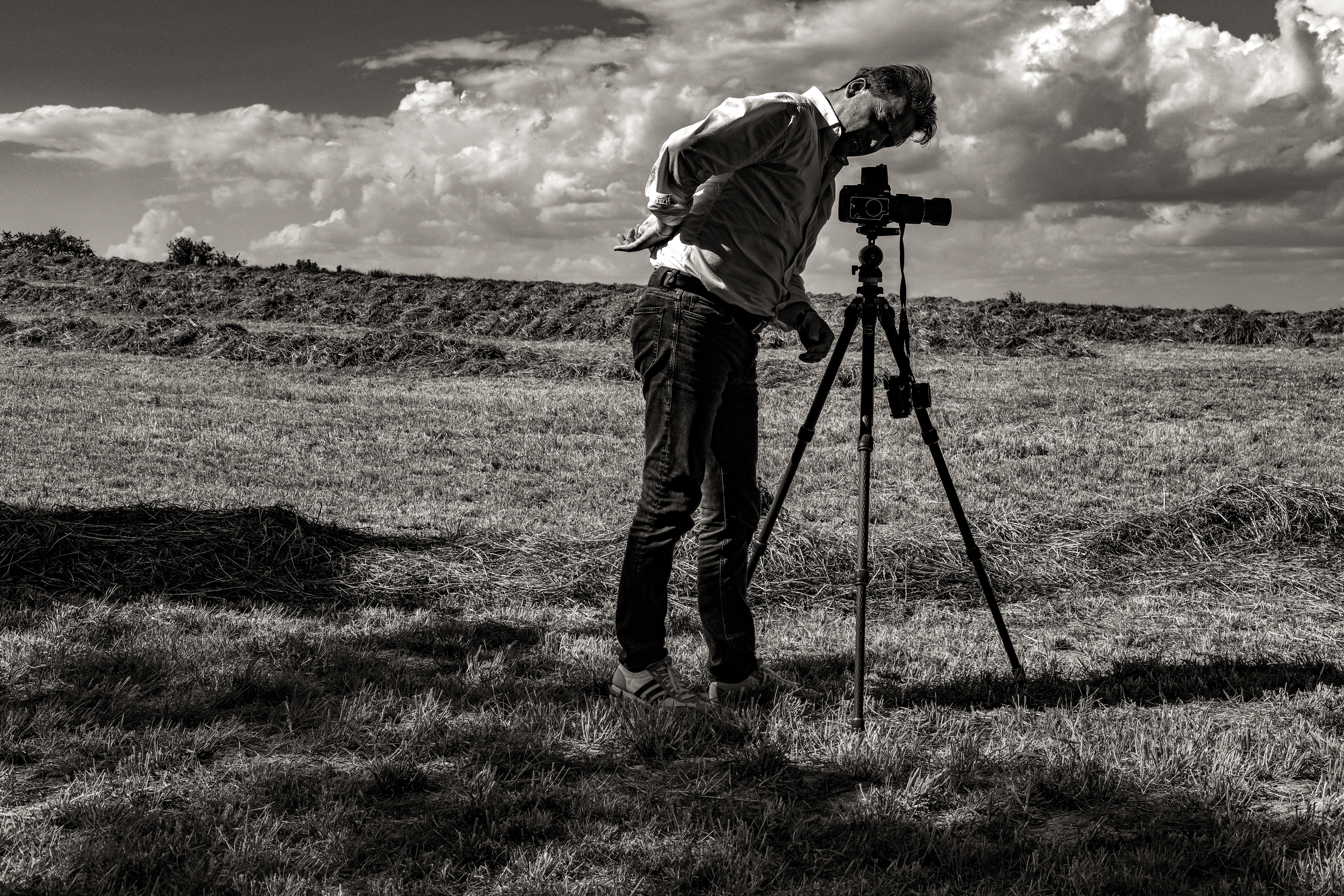
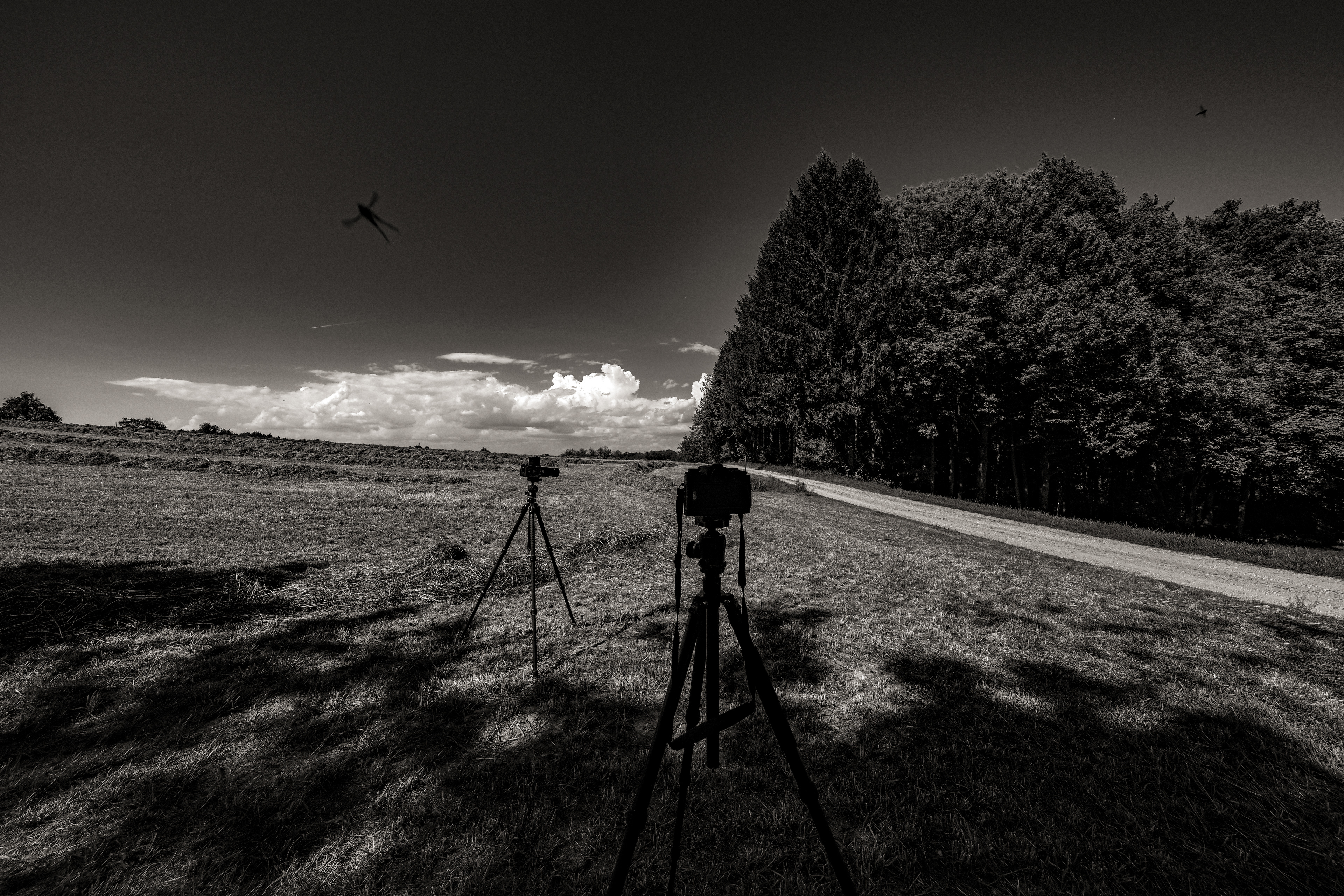
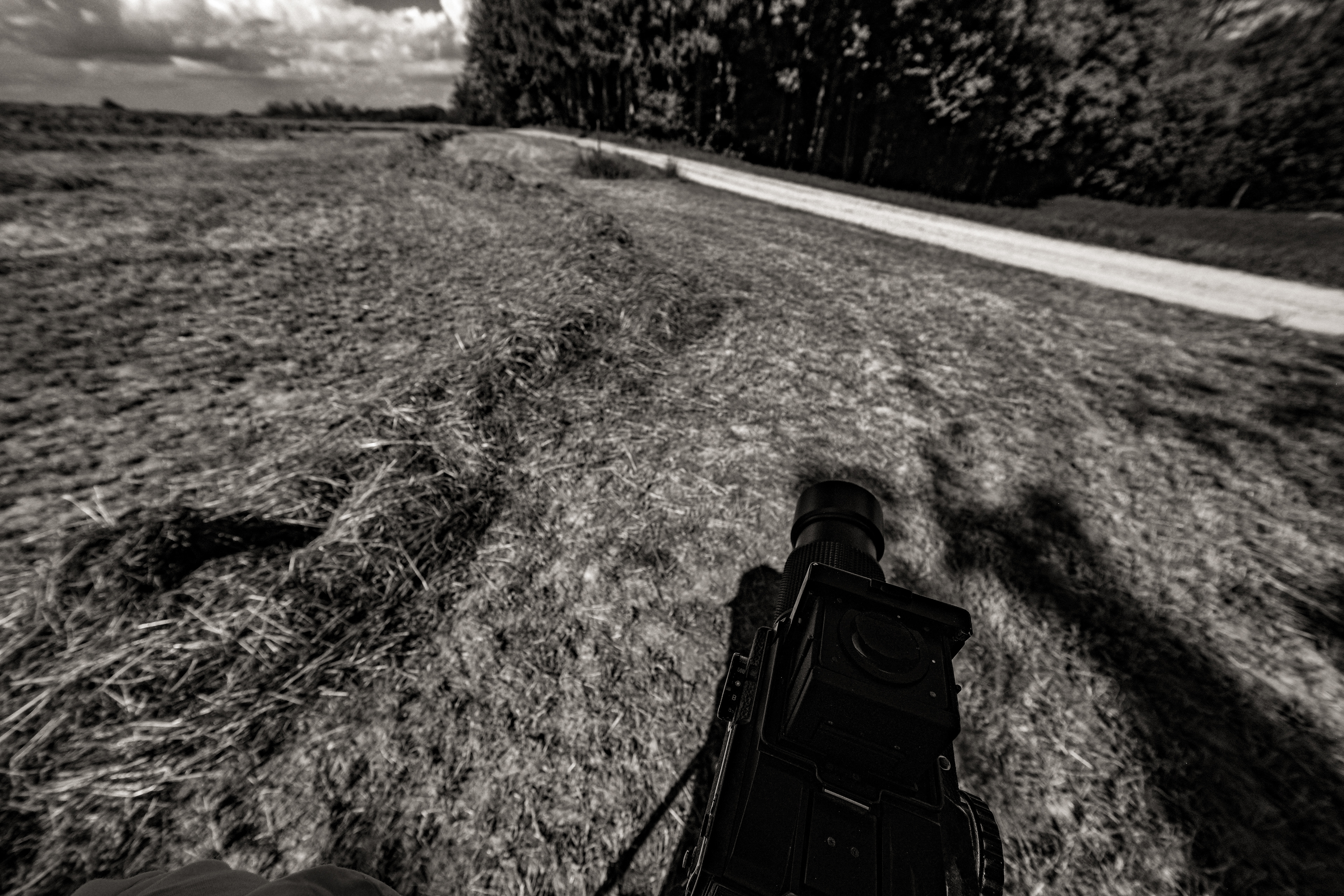
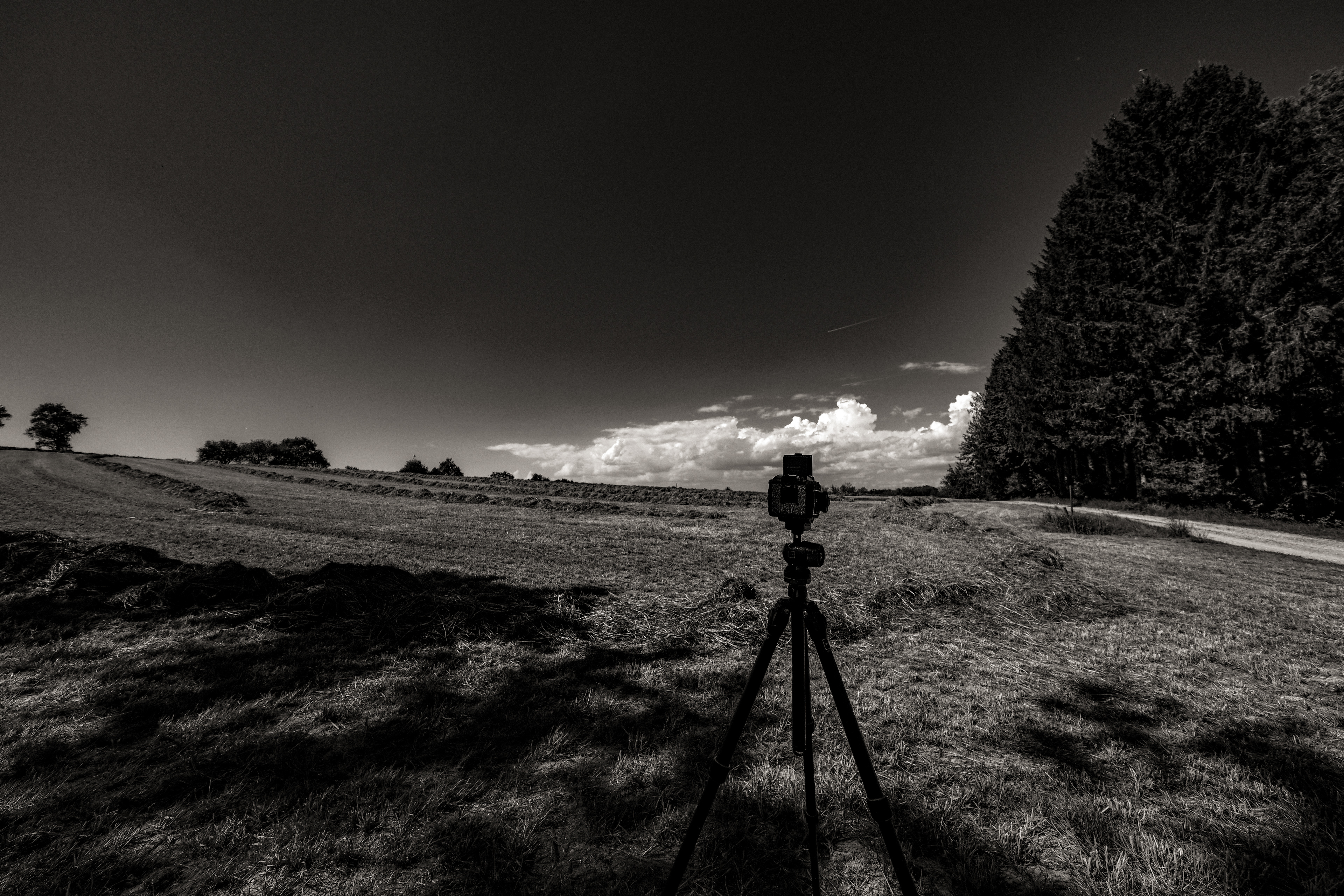

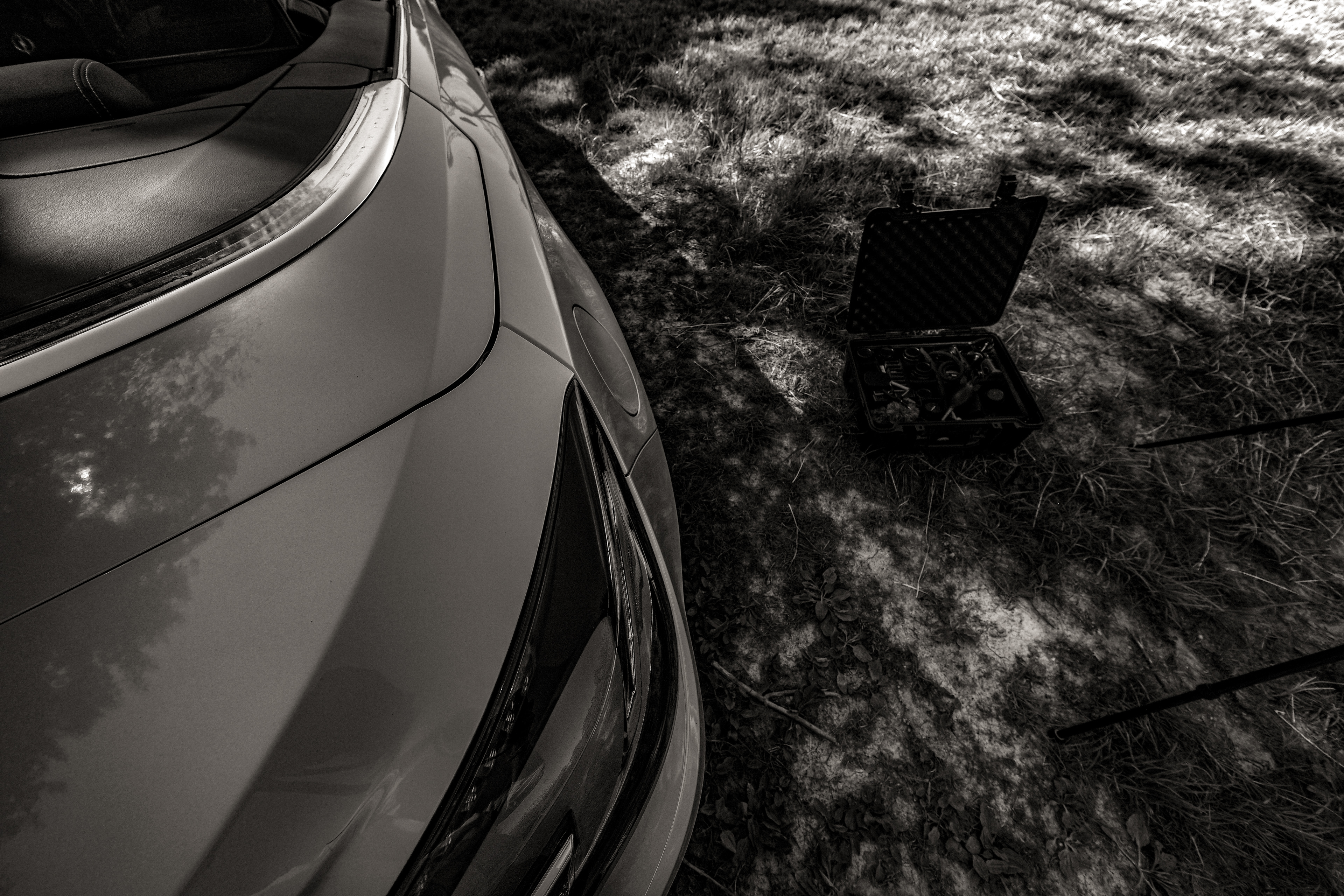
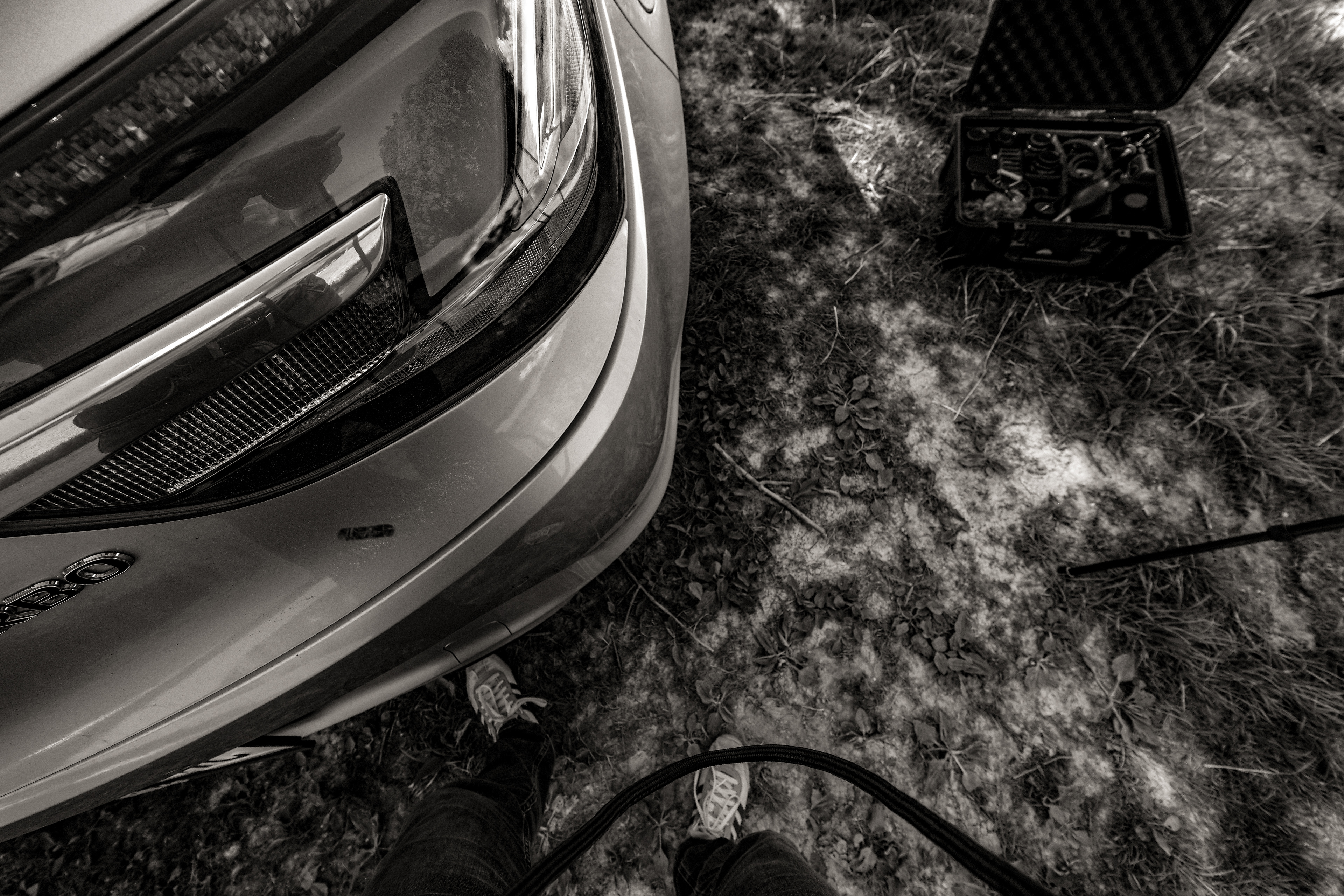
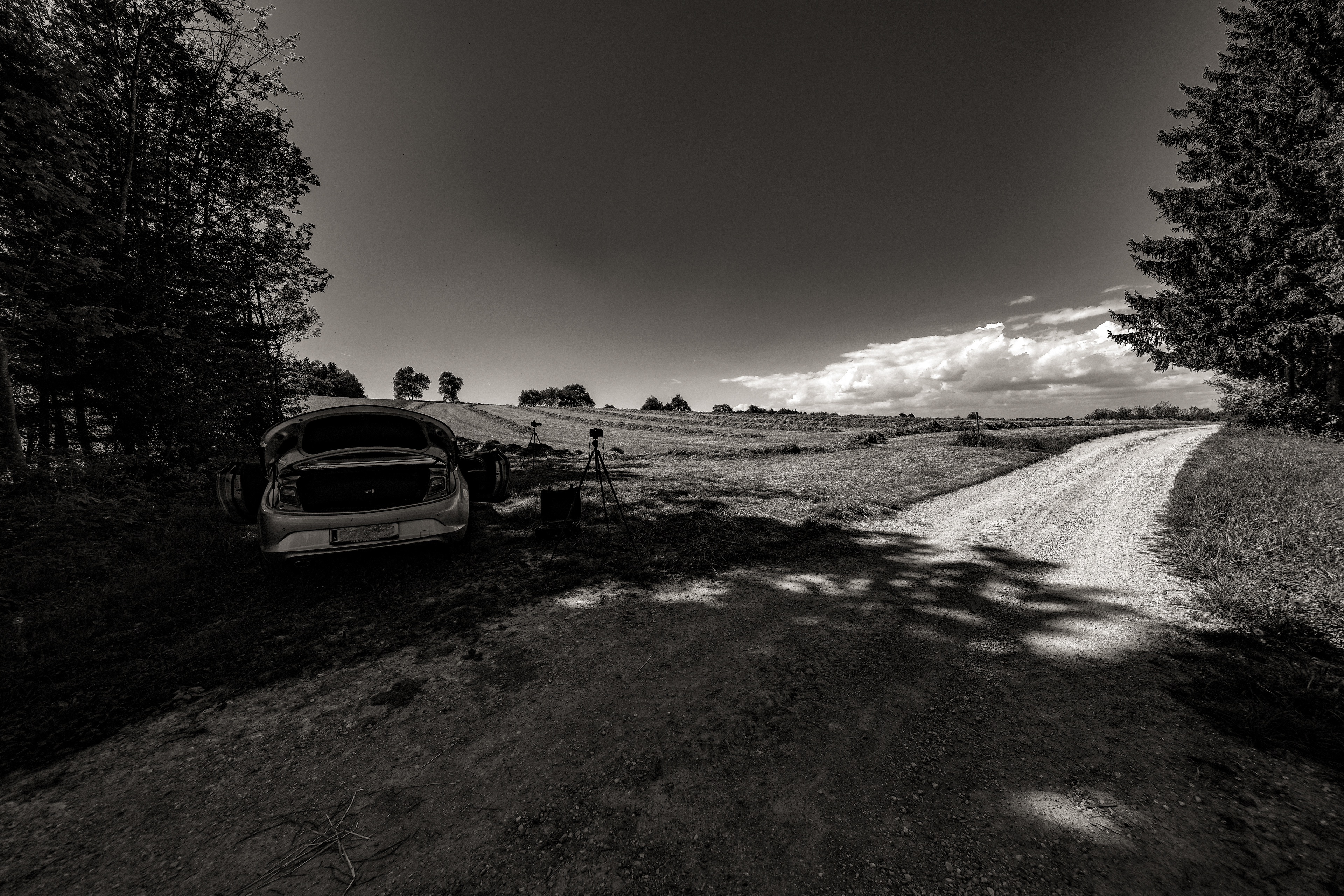

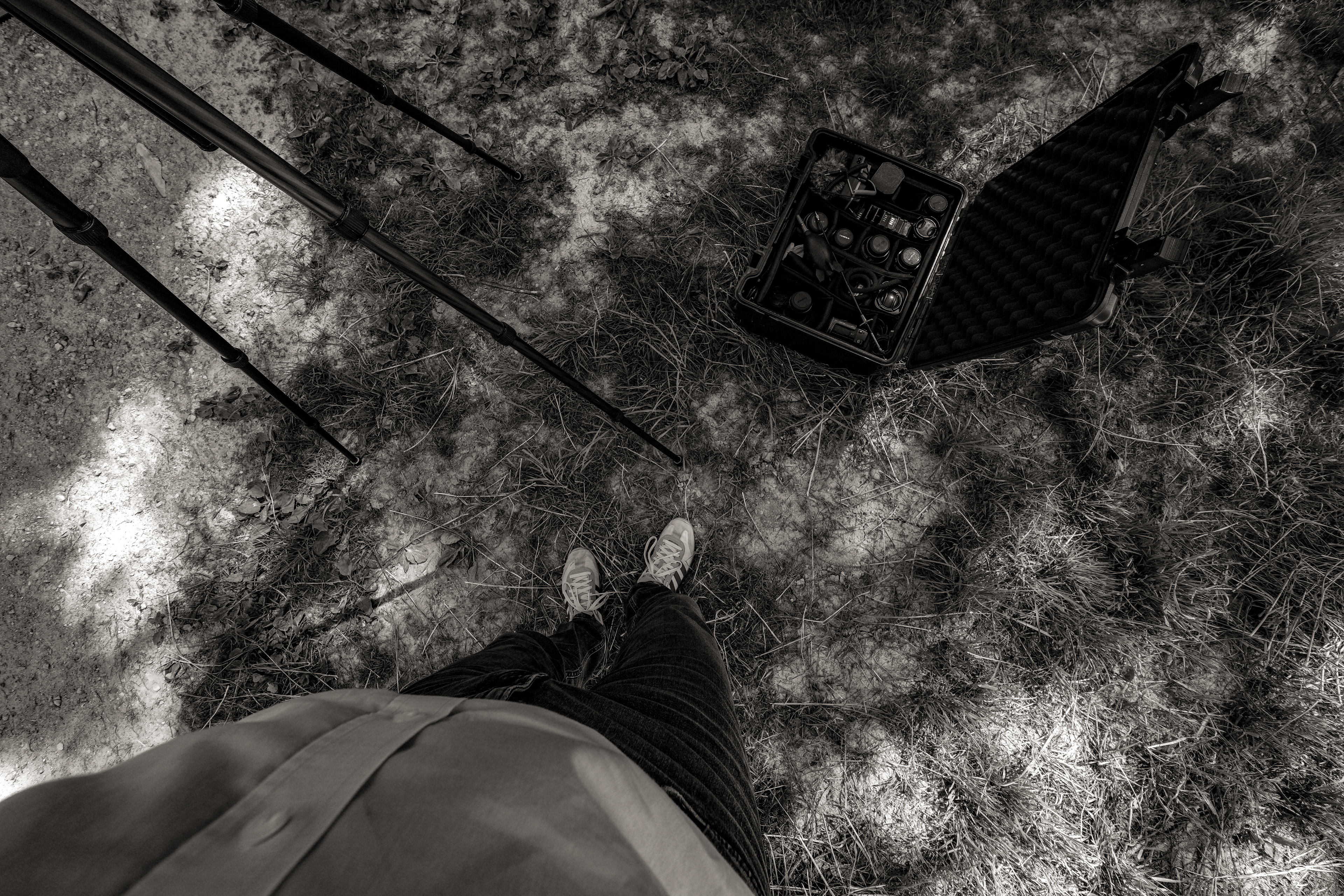

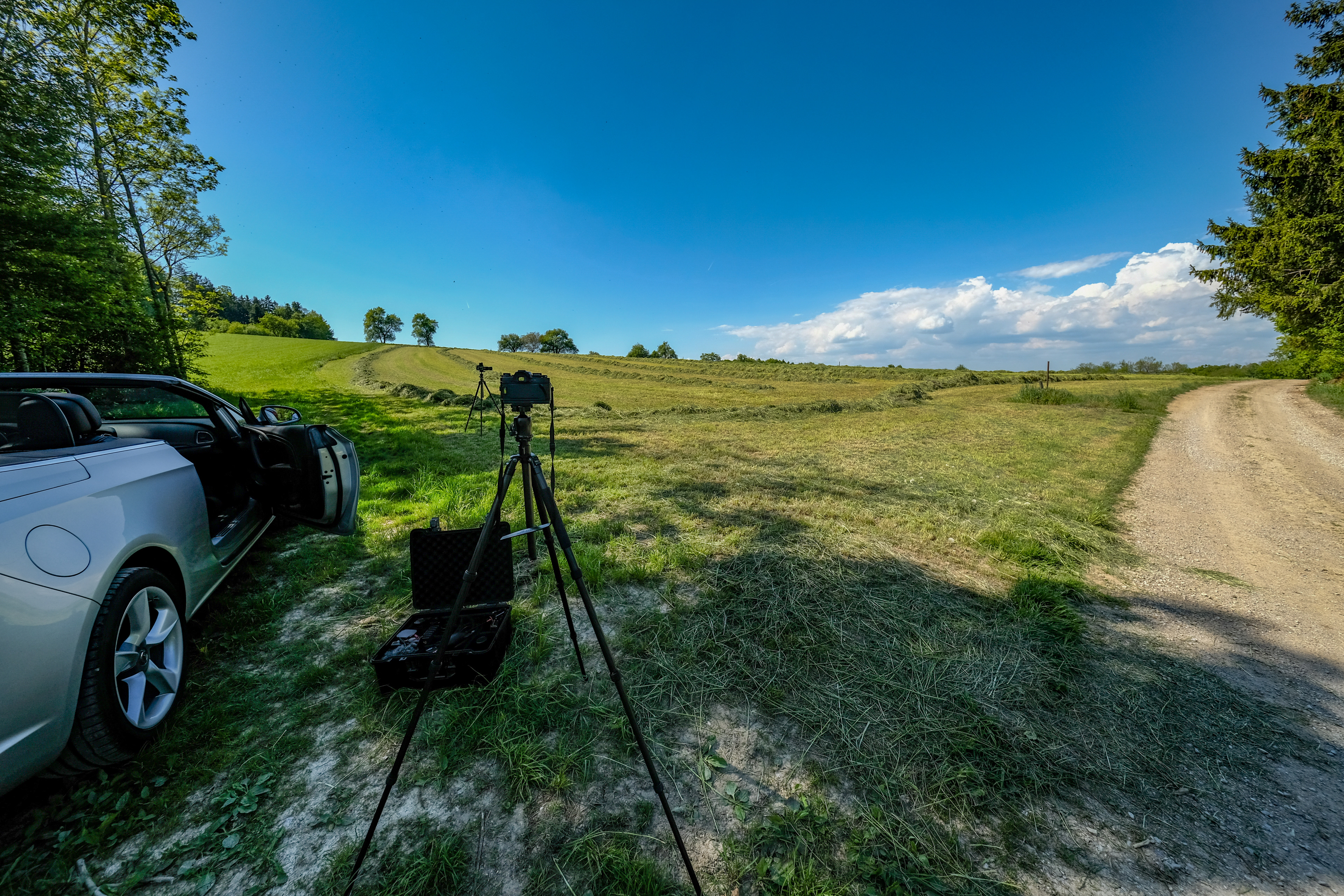
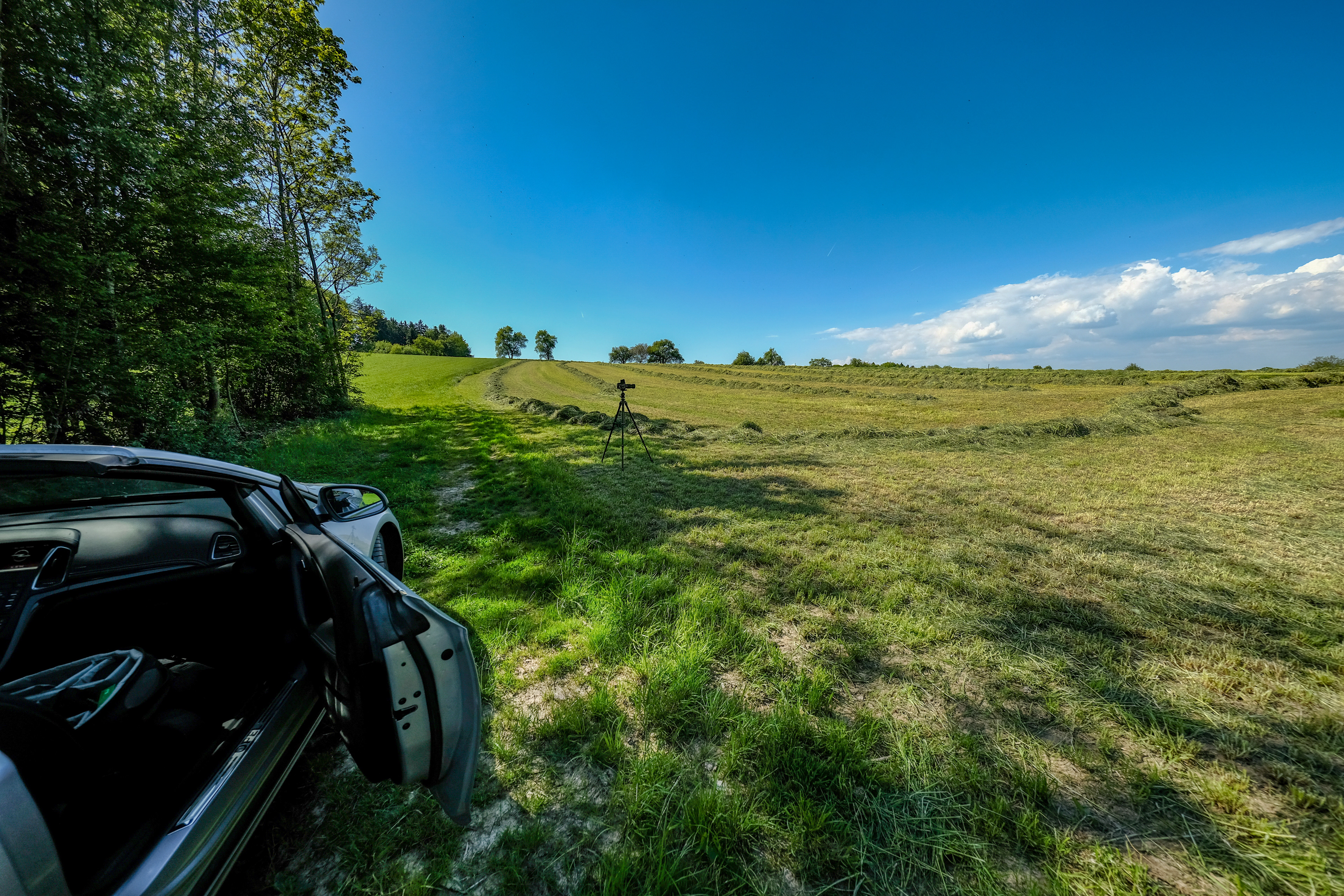
The photographs mainly the first and the second one presented exemplify a compelling dialogue between presence and absence, action and anticipation, through the photographic apparatus itself. The images are charged with a paradoxical tension: the camera stands fixed, stable, and seemingly neutral, yet it operates as a potent symbol of subjective agency. In the first image, the figure appears playful, almost caught mid-leap, emphasizing the dynamic, spontaneous relationship between photographer and subject. The humor embedded here underscores the theatrical dimension of photography—the subtle reminder that the act of capturing images is itself performative. The tripod-mounted camera, quiet and central, remains indifferent to the ongoing scene yet is crucially involved, silently mediating reality. The second photograph offers a different kind of narrative. Here, the figure walks away, perhaps toward a photographic subject outside the frame or perhaps abandoning the photographic process altogether. The composition transforms the camera from mere observer to a deserted witness, highlighting photography’s inherent temporality—the camera waits, observing emptiness, marking a moment of potential that never fully materializes within the frame itself. Together, these images articulate the conceptual dualities fundamental to photographic theory: motion versus stasis, subjective action versus mechanical neutrality, and the perpetual oscillation between visibility and invisibility. Ultimately, they provoke contemplation on the hidden narratives behind the photographic act, reminding viewers that every image encapsulates both the seen and the unseen.















